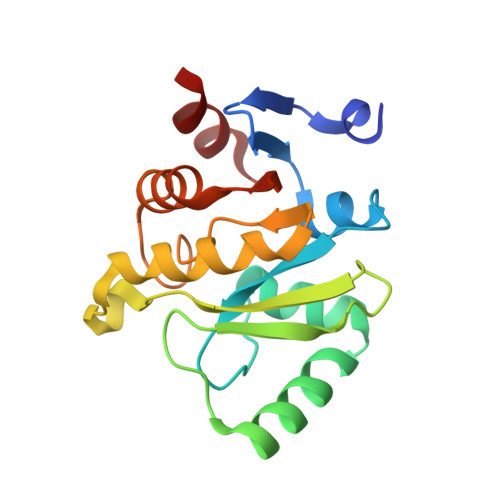Macro Domain from Middle East Respiratory Syndrome Coronavirus (MERS-CoV) Is an Efficient ADP-ribose Binding Module: CRYSTAL STRUCTURE AND BIOCHEMICAL STUDIES
Cho, C.-C., Lin, M.-H., Chuang, C.-Y., Hsu, C.-H.(2016) J Biol Chem 291: 4894-4902
- PubMed: 26740631
- DOI: https://doi.org/10.1074/jbc.M115.700542
- Primary Citation of Related Structures:
5DUS - PubMed Abstract:
The newly emerging Middle East respiratory syndrome coronavirus (MERS-CoV) encodes the conserved macro domain within non-structural protein 3. However, the precise biochemical function and structure of the macro domain is unclear. Using differential scanning fluorimetry and isothermal titration calorimetry, we characterized the MERS-CoV macro domain as a more efficient adenosine diphosphate (ADP)-ribose binding module than macro domains from other CoVs. Furthermore, the crystal structure of the MERS-CoV macro domain was determined at 1.43-Å resolution in complex with ADP-ribose. Comparison of macro domains from MERS-CoV and other human CoVs revealed structural differences in the α1 helix alters how the conserved Asp-20 interacts with ADP-ribose and may explain the efficient binding of the MERS-CoV macro domain to ADP-ribose. This study provides structural and biophysical bases to further evaluate the role of the MERS-CoV macro domain in the host response via ADP-ribose binding but also as a potential target for drug design.
Organizational Affiliation:
From the Genome and Systems Biology Degree Program, National Taiwan University and Academia Sinica, Taipei 10617.

















